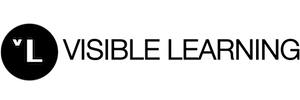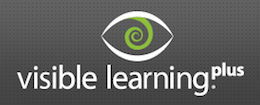The aim of this website is to bring together the freely available online resources related to John Hattie’s Visible Learning research (videos, research papers, books and news articles) and to enable a deeper understanding of the underlying concepts. Disclaimer: This website is an independent web project and not in any way affiliated with John Hattie’s professional development program “Visible Learning Plus”.
Visible Learning was introduced by John Hattie in his groundbreaking meta study Visible Learning (2009). Hattie compared effect sizes of many aspects that influence learning outcomes. Hattie points out that in education most things work. The questions is which ones work best and where to concentrate our efforts.
When John Hattie’s first book Visible Learning was published in 2009 the Times Educational Supplement talked of nothing less than the “holy grail of education“. For an interview with John Hattie in 2012 TES titled “He’s not the messiah… but for many policymakers he comes close.” At least since he has published his follow up Visible Learning for Teachers (2012) that focuses on the underlying story behind the data. One of the main aspects of Visible Learning is a new understanding of the enhanced role of teachers: Teachers are most successful when they become evaluators of their own teaching.
During my own work with schools in Germany and the research for a book about students feedback I noticed that most teachers are highly interested to learn about “what works best in education” based on facts from the Visible Learning study. However, it is also a huge challenge for teachers, head teachers or school districts to bring Visible Learning aspects and a new role of teachers into the classroom. The question teachers asked most was: Where to start?
This website is aimed to help decide this question for your own school and share your experiences with other teachers. It provides useful background information that helps to bring the research into action. It is your impact on your students in your school.
Focus is crucial, so keep it simple! Take one aspect amongst the most powerful influences for students’ achievement that fits best to your current classroom or school.
If you have any questions or remarks about Visible Learning please contact us or leave a comment. If you want to share your own experiences with Visible Learning in your school with other teachers please send us an Email and we will publish your Visible Learning experience on this website. I am looking forward to hearing from you!
Sebastian Waack – Founder of Founder of Edkimo.com / Member of
EdTech-Verband e.V. / Author at Startchancen-Programm / (CV)






Dear colleagues,
From your website:
“The Indipendent: John Hattie talks about British schools”
Spot the spelling mistake?
I thought that was funny…
Best,
Heino
Dear Heino, Thank you for spotting the spelling mistake !
Best, Sebastian
Book “Visible Learning.A synthesis of over 800 meta-analyses relating to achievement” p. 62:
“Hart and Risley (1995) showed that when students from lower SES groups start school, they have, on average, spoken about 2.5 million words, whereas those from higher groups have spoken 4.5 million words.”
Really? It is not funny 🙂
Hope, John Hattie is more accurate with other figures in the book.
i cannot follow, please explain.
the 2,5 million words are, as i understand the figure, the sum total of all words uttered. it is not the size of their vocab, i would think.
one would have to find out what the school starting age is. let’s assume 5. then that would mean 3 1/2 yrs of speaking, or 1200 days. makes an average of 2000 words per day for the children from lower socioeconomic status groups, almost the double for those of higher status.
sounds possible to me.
@Tamara: Here is a link to a short summary of Hart and Risley (1995) “Meaningful differences”. You can get the book here on Amazon.
@ Gregor: Thanks for clarifying this point!
Hi, thanks for this great website.
Under ‘Piagetian programs’ you rightly state that the correlation is between assessment by piagetian methods and conventional assessment. However, you give the impression that ‘piagetian methods’ are an effective method of teaching with your explanation of the ‘stages’ and the sentence:”Example for Piagetian programs: Focus on the thinking processes rather than the outcomes and do not impose the adult thinking process on to children.”
The entry in hattie’s table refers only to the assessment correlation, not the effectiveness of that type of teaching.
(Please correct me if I am wrong!)
I would like to contact JOhn Hattie about an instrument that I have developped for visualising and improving the dialoge between teachers and students/children. Does anybody know how to reach mr. Hattie?
Hi Martijn
I work for Osiris Educational who have the UK exclusive rights to Professor John Hattie and his Visible Learningplus Programme developed in conjunction with Cognition Education. We are currently delivering the Whole School Programme, day courses and in-school training across the UK and the feedback has been excellent.
If you would like to forward your question to me I will ensure that Professor John Hattie receives it.
Look forward to hearing from you.
Regards.
Hannah
What is the best way to contact him for a workshop in India?
Is there any research on Block scheduling for secondary schools?
I would like to know if there has been any analysis of the research available concerning the pros and cons of children with
learning difficulties such as dyslexia, learning a second (or third)language at school. Thanks
We are looking to implement co-teaching between SPEd and Reg Ed teachers. It only got a .19 effect size. Where can I find the reason for such a low effect size?
Huge Hattie fan. I am so looking forward to the work being done between Jim Knight and John Hattie.
My question is this: Listening to his July 1, 2017 researchED talk in Melbourne and I am wondering what the effect size is when you combine highly effective teachers with small class size? If the effect size of class size is only a positive 0.22, wouldn’t it have to be combined with a good teacher? Maybe the point is obvious (so pardon me), but we already know the teacher and their capacity is where our energy, focus, and funds should go….not programs….so if we were to combine building teacher capacity and small class size and use our funds that way, wouldn’t that shoot the effect size through the roof?
Thank you for your time.
I can send you the 3 meta-analyses Hattie used for Class size in the 2009 edition of his book. He’s added a 4th study but I can’t find it in any uni library. The 3 studies show quite an improvement in learning when class size is reduced.
Are Hattie’s studies available to read? If so, how does one access them? I am looking at the importance of the teacher in relation to student outcomes and would like to read Hattie’s research. Thanks!
Good evening John,
I’m a producer for the World at One on BBC Radio 4 in the UK and I’m wondering if we might be able to speak with you about homework for primary-age pupils in about 90 minutes from now.
Might that be possible?
I do appreciate the time difference but it would be great o get your thoughts.
Thanks,
Chris
THe research Hattie uses is mostly other people’s research. In his 2008 book he gives the authors of the studies he used.
If you have access to a university library you can find most of the research there.
I’ve read a lot of the research and found many errors in Hattie’s interpretation. I’ve listed summaries of some of the research here-
https://visablelearning.blogspot.com/
If there is a particular study you want i may be able to find it for you.
I am beginning to complete a budget plan for 2019-2020. Do you have any information about the Visible Learning 2020 conference – location, date, cost? Thank you so much.